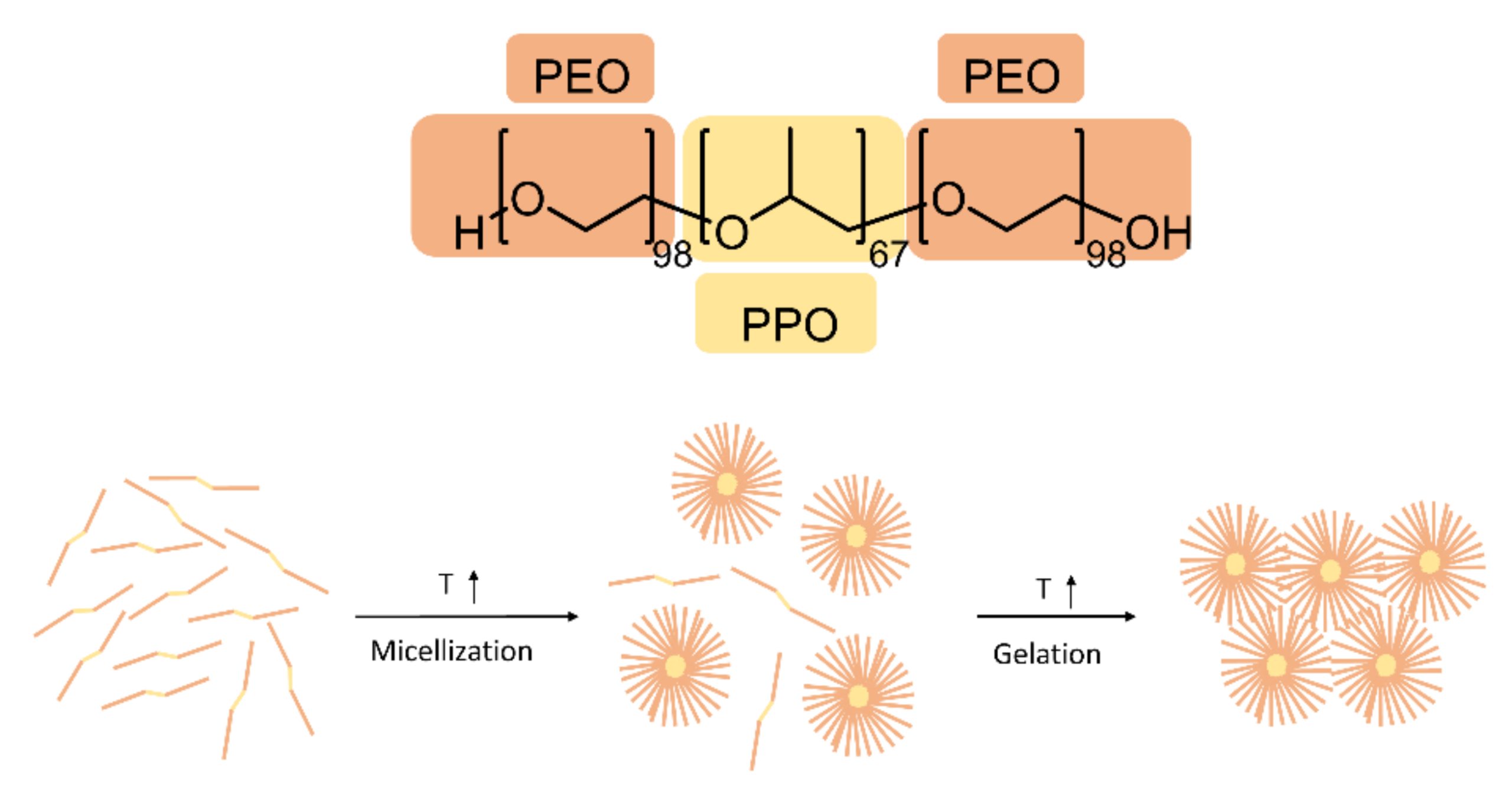Poloxamer-Based Hydrogel as Drug Delivery System: How Polymeric Excipients Influence the Chemical-Physical Properties

Thermogelling amphiphilic block copolymers have been widely investigated in the development of pharmaceutical drug carriers. In particular, thermosensitive gels based on poloxamer 407 (P407) have great potential for periodontal disease treatment, thanks to their ability to be liquid at room temperature and become viscous gels at body temperature. However, some problems, related to short in situ residence time, reduce their feasible clinical use. Thus, in order to improve the effective applicability of these materials, we studied how P407 thermogels are affected by the pH and by the inclusion of different hydrophilic polymers, used as excipients for increasing the gel stiffness. For this scope, a complete chemical-physical characterization of the synthesized gels is provided, in terms of determination of sol-gel transition temperature, viscosity and erosion degree. The data are correlated according to a statistical multivariate approach based on Principal Component Analysis and their mucoadhesion properties are also tested by Tapping mode-Atomic Force Microscopy (TM-AFM) imaging. Finally, we studied how the different P407 formulations are able to influence the release pathway of two antibacterial drugs (i.e., chlorhexidine digluconate and doxycycline hyclate) largely used in oral diseases.
Download the full article as PDF here Poloxamer-Based Hydrogel as Drug Delivery System_How Polymeric Excipients Influence the Chemical-Physical Properties
Materials
P407 (Pluronic F-127), carrageenan (E407), xanthan gum (XG), (hydroxypropyl)methyl cellulose (HPMC) and polyvinylpyrrolidone (PVP) were purchased from Sigma-Aldrich (St. Louis, MO, USA), doxycycline hyclate (DOX), chlorhexidine digluconate (CHX) were purchased from Thermo Fisher Scientific (Waltham, MA, USA). All batches of hydrogel were prepared using analytical grade reagents. All batches of hydrogels were prepared using ultrapure water (resistivity 18.2 MΩ·cm) obtained by a water purification system (Milli-Q® Direct, EMD Millipore, Darmstadt, Germany).
Brambilla, E.; Locarno, S.; Gallo, S.; Orsini, F.; Pini, C.; Farronato, M.; Thomaz, D.V.; Lenardi, C.; Piazzoni, M.; Tartaglia, G. Poloxamer-Based Hydrogel as Drug Delivery System: How Polymeric Excipients Influence the Chemical-Physical Properties. Polymers 2022, 14, 3624. https://doi.org/10.3390/polym14173624

